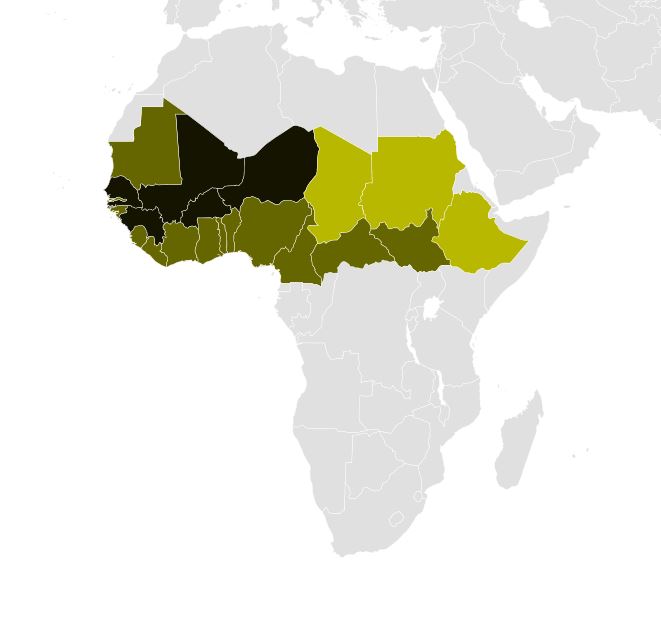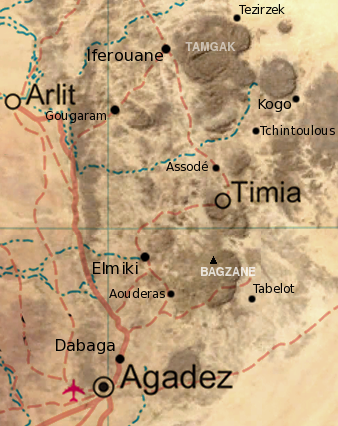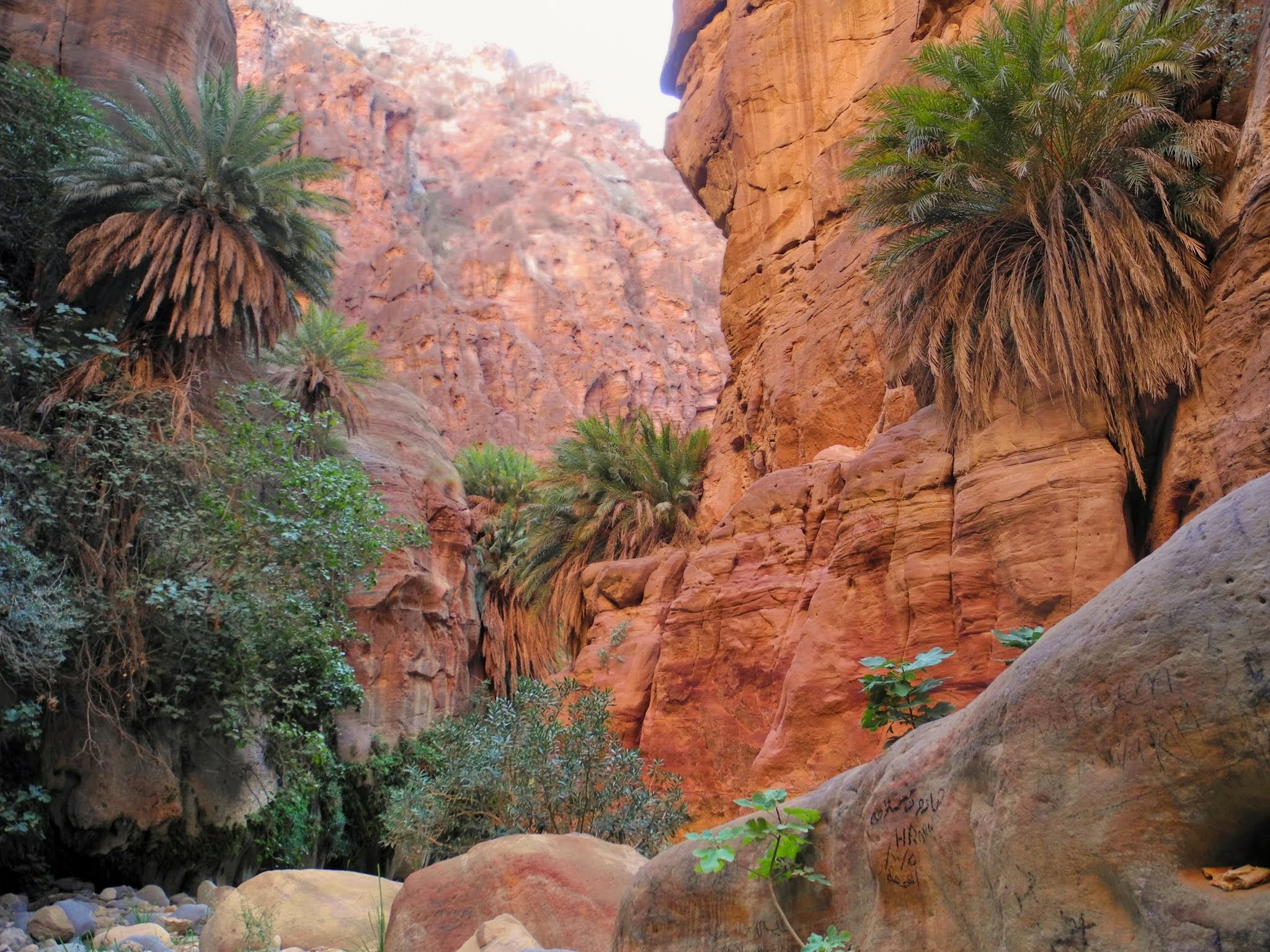|
Abalagh
Abalak (or Abalagh) (in tamajeq ⴰⴱⴰⵍⴰⵗ) is a town located in the Tahoua Region, Abalak Department of northern Niger. It is both a town and Commune: a local administrative division. It is the seat (''Chef-lieu'') of Abalak Department, one of eight subdivisions of Tahoua Region. The town had a population of less than 74,719 at the 2012 census. Geography Abalak lies near the northern extremity of the Sahel, bordering the Sahara desert. It also lies along the southern edge of the dry plains and fossilized river valleys which make up the Azawagh. The town itself lies in a seasonal wash — a Kori (Hausa) or Wadi (Arabic) — which retains underground water even during the long dry season. Transport and economy Abalak lies along a highway, connected to the main Niamey–Tahoua–Agadez–Arlit paved highway just to the northeast of the town. To the south, the local road connects the town of Keita, Niger to the main road network. Abalak is a regional mar ... [...More Info...] [...Related Items...] OR: [Wikipedia] [Google] [Baidu] |
Tuareg People
The Tuareg people (; also spelled Twareg or Touareg; Endonym and exonym, endonym, depending on Tuareg languages#Subclassification, variety: ''Imuhaɣ'', ''Imušaɣ'', ''Imašeɣăn'' or ''Imajeɣăn'') are a large Berbers, Berber ethnic group, traditionally nomadic pastoralism, pastoralists, who principally inhabit the Sahara in a vast area stretching from far southwestern Libya to southern Algeria, Niger, Mali, Burkina Faso, and as far as northern Nigeria, with small communities in Chad and Sudan known as the ''Kinnin''. The Tuareg speak Tuareg languages, languages of the same name, also known as ''Tamasheq'', which belong to the Berber languages, Berber branch of the Afroasiatic family. They are a semi-nomadic people who mostly practice Islam, and are descended from the indigenous Berber communities of Northern Africa, whose ancestry has been described as a mosaic of local North Africa, Northern African (Taforalt), Middle Eastern, Genetic history of Europe, European (Early Eu ... [...More Info...] [...Related Items...] OR: [Wikipedia] [Google] [Baidu] |
Tuareg Language
Tuareg (), also known as ''Tamasheq'' (), ''Tamajaq'' or ''Tamahaq'' ( Tifinagh: ), is a group of closely related Berber varieties. They are spoken by the Tuareg Berbers in large parts of Mali, Niger, Algeria, Libya, and Burkina Faso, with a few speakers, the ''Kinnin'', in Chad. Description The Tuareg varieties, on account of their low internal diversity and high mutual intercomprehensibility, are commonly regarded as a single language by linguists (as for instance by Karl-Gottfried Prasse). They are distinguished mainly by a few sound shifts (notably affecting the pronunciation of original ''z'' and ''h''). The Tuareg varieties are unusually conservative in some respects; they retain two short vowels where Northern Berber languages have one or none, and have a much lower proportion of Arabic loanwords than most Berber languages. The Tuareg languages are traditionally written in the indigenous Tifinagh alphabet. However, the Arabic script is commonly used in some areas (and ... [...More Info...] [...Related Items...] OR: [Wikipedia] [Google] [Baidu] |
Azawagh
The Azawagh (alias ''Azaouagh'' or ''Azawak'') is a dry basin covering what is today the northwestern Niger, as well as parts of northeastern Mali and southern Algeria. The Azawagh is mainly made up of Sahelian and Saharan flatlands and has a population that is predominantly Tuareg, with some Arabic-speaking and Wodaabe minorities and a recent influx of Hausa and Zarma. Name The Tuareg word ''azawaɣ'' means "savannah". Azawad, a term used for the portion of northern Mali claimed by the Tuareg rebel movement National Movement for the Liberation of Azawad, is believed to be an Arabic corruption of "Azawagh". Geography The Azawagh refers to the dry structural basin, which once carried a northern tributary of the Niger River, the Azawagh river, known as Dallol Bosso further south. The river, which ran some in prehistoric times, dried up after the Neolithic Subpluvial and created a basin of some . Its valley, which geologists call the Iullemmeden Basin, is bordered ... [...More Info...] [...Related Items...] OR: [Wikipedia] [Google] [Baidu] |
Niamey
Niamey () is the capital and largest city of Niger. As the Niamey Urban Community (, CUN), it is a Regions of Niger, first-level division of Niger, surrounded by the Tillabéri Region, in the western part of the country. Niamey lies on the Niger River, primarily situated on the river's east bank. The capital of Niger since the Colony of Niger, colonial era, Niamey is an ethnically diverse city and the country's main economic centre. Before the French developed it as a colonial centre, Niamey was the site of villages inhabited by Fula people, Fula, Zarma people, Zarma, Maouri people, Maouri, and Songhai people, Songhai people. French expeditions first visited Niamey in the 1890s before Captain established a military post in 1901. Niamey replaced Zinder as the territorial capital from 1903 to 1911 and again in 1926, after which large-scale development occurred. The first city plan in 1930 relocated neighbourhoods and enacted Racial segregation, segregation of European and indigen ... [...More Info...] [...Related Items...] OR: [Wikipedia] [Google] [Baidu] |
Fula People
The Fula, Fulani, or Fulɓe people are an ethnic group in Sahara, Sahel and West Africa, widely dispersed across the region. Inhabiting many countries, they live mainly in West Africa and northern parts of Central Africa, South Sudan, Darfur, and regions near the Red Sea coast in Sudan. The approximate number of Fula people is unknown, due to clashing definitions regarding Fula ethnicity. Various estimates put the figure between 25 and 40 million people worldwide. A significant proportion of the Fula – a third, or an estimated 7 to 10 million – are pastoralism, pastoralists, and their ethnic group has the largest nomadic pastoral community in the world., Quote: The Fulani form the largest pastoral nomadic group in the world. The Bororo'en are noted for the size of their cattle herds. In addition to fully nomadic groups, however, there are also semisedentary Fulani – Fulbe Laddi – who also farm, although they argue that they do so out of necessity, not choice. The major ... [...More Info...] [...Related Items...] OR: [Wikipedia] [Google] [Baidu] |
Wodaabe
The Wodaabe (, , ''𞤏𞤮𞤯𞤢𞥄𞤩𞤫'') is a name that is used to designate a subgroup of the Fula ethnic group who are traditionally nomadic and found primarily in Niger and Chad. All Wodaabe people should not be mistaken as Mbororo as these are two separate subgroups of the Fulani people. It is translated into English as "Cattle Fulani", and meaning "those who dwell in cattle camps". The Wodaabe culture is one of the 186 cultures of the standard cross-cultural sample used by anthropologists to compare cultural traits. A Wodaabe woman, Hindou Oumarou Ibrahim, was also chosen to represent civil society of the world on the signing of Paris Protocol on 22 April 2016. History The Wodaabe are cattle-herders and traders in the Sahel, with migrations stretching from southern Niger, through northern Nigeria, northeastern Cameroon, southwestern Chad, western region of the Central African Republic and the northeastern of the Democratic Republic of Congo. The number of Woda ... [...More Info...] [...Related Items...] OR: [Wikipedia] [Google] [Baidu] |
Keita, Niger
Keita is a town and commune in Niger. It is the capital of the Keita Department, within the Tahoua Region, and has an urban population of 10,631 as of 2012. Geography Keita is located north-east of the national capital, Niamey. The town is in the semi-arid Sahel, and is threatened by famine. Keita is divided into the districts of Idewaran, Lissawan and Moulela. History Keita became the ''chef-lieu'' of the eponymous canton in 1913. In 1917, Tuareg insurgents based in Italian-occupied Libya attacked and plundered the city, killing several people including canton chief Afadandan Ichawa. The attack led to a successful counter-offensive of the French.Giraut 1994, p. 166 In the late 1940s and early 1950s, Keita developed a rising number of inhabitants and transformed from a village to a small town.Giraut 1994, p. 167 Keita became the prefecture seat in 1964.Frédéric Giraut: ''La petite ville. Un milieu adapté aux paradoxes de l’Afrique de l’Ouest. Etudes sur le semis et co ... [...More Info...] [...Related Items...] OR: [Wikipedia] [Google] [Baidu] |
Arlit
Arlit is an industrial town and capital of the Arlit Department of the Agadez Region of northern-central Niger, built between the Sahara Desert and the eastern edge of the Aïr Mountains. It is 200 kilometers south by road from the border with Algeria. As of 2012, the commune had a total population of 79,725 people. Uranium industry Founded in 1969 following the discovery of uranium, it has grown around the mining industry, developed by the French government. Two large uranium mines, at Arlit and nearby Akouta, are exploited by open top strip mining. One open-pit mine was built in 1971 by the National Mining Company of Niger, SOMAIR. The second open-pit mine, as well as a third underground mine, was built by the French Compagnie Minière d'Akouta (or COMINAK). All the ore from both is now processed and transported by a French company Orano Cycle, a holding of the Orano group, itself a state-owned operation of the French ''Commissariat à l'énergie atomique'' ... [...More Info...] [...Related Items...] OR: [Wikipedia] [Google] [Baidu] |
Agadez
Agadez ( Air Tamajeq: ⴰⴶⴰⴷⴰⵣ, ''Agadaz''), formerly spelled Agadès, is the fifth largest city in Niger, with a population of 110,497 based on the 2012 census. The capital of the eponymous Agadez Region, the city lies in the Sahara desert, and is also the capital of Aïr, one of the traditional Tuareg–Berber federations. The historic centre of the town has been designated a World Heritage Site by UNESCO. History Agadez was founded before the 14th century, and, by growing around trans-Saharan trade, gradually became the most important city of the Tuareg people, supplanting Assodé. The city still sees the arrival of caravans bringing salt from Bilma. In 1449 Agadez became a sultanate, but was later conquered by the Songhai Empire in 1515, remaining a part of that empire until 1591.Geels, Jolijn, (2006) ''Bradt Travel Guide - Niger'', pgs. 157-200 At this point, the city had a population of around 30,000 people. By then, the city was a key passage for the med ... [...More Info...] [...Related Items...] OR: [Wikipedia] [Google] [Baidu] |
Tahoua
Tahoua is a city in Niger and the administrative centre of the Department of Tahoua and the larger Tahoua Region. Falling Rain Genomics, Inc. 1996–2004 It is the fourth largest town in the country, with a population of 117,826 (2012 Census). Overview The city is primarily a for the surrounding agricultural area. It serves as an entrepot for merchants from the north and[...More Info...] [...Related Items...] OR: [Wikipedia] [Google] [Baidu] |
Regions Of Niger
Niger is divided into seven regions (French: ''régions;'' singular''région)'', each of which is named after its capital. Additionally, the national capital, Niamey, comprises a capital district. Current regions *capital district. Current administrative structure Each of Niger's regions are subdivided into departments and communes. As of 2005, there were 36 ''départements'', divided into 265 communes, 122 cantons and 81 ''groupements''. The latter two categories cover all areas not covered by urban communes (population over 10000) or rural communes (total population 13 million), and are governed by the department, whereas communes have had elected councils and mayors since 1999. Additional semi-autonomous subdivisions include sultanates, provinces and tributaries (''tribus''). The Nigerien government estimates there are an additional 17000 villages administered by rural communes, while there are a number of ''quartiers'' (boroughs or neighborhoods) administered by urban ... [...More Info...] [...Related Items...] OR: [Wikipedia] [Google] [Baidu] |
Wadi
Wadi ( ; ) is a river valley or a wet (ephemerality, ephemeral) Stream bed, riverbed that contains water only when heavy rain occurs. Wadis are located on gently sloping, nearly flat parts of deserts; commonly they begin on the distal portions of alluvial fans and extend to inland sabkhas or dry lakes. Permanent channels do not exist, due to lack of continual water flow. Water percolates down into the stream bed, causing an abrupt loss of energy and resulting in vast deposition. Wadis may develop dams of sediment that change the stream patterns in the next flash flood. Wadis tend to be associated with centers of human population because sub-surface water is sometimes available in them. Nomadic and pastoral desert peoples will rely on seasonal vegetation found in wadis, even in regions as dry as the Sahara, as they travel in complex transhumance routes. The centrality of wadis to water – and human life – in desert environments gave birth to the distinct sub-field of wadi h ... [...More Info...] [...Related Items...] OR: [Wikipedia] [Google] [Baidu] |







